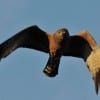
by Jim Stevenson
Liz and I dropped off our clients at the Darwin Airport last night and are now heading off to Western Australia for nearly a month in the Gibson and Great Sandy Deserts, the Nullarbor Plain and coastal WA. We are very excited! We’ve folded down the rear van seats, laid in a perfect-sized mattress over them with plywood under it and bought all the groceries in Central Darwin. Vvvvrrrrroooooooommmmm!!!!
This week we have many of Australia’s hawks, falcons, kites and other avian predators. I hope you enjoy seeing what we’re been seeing.
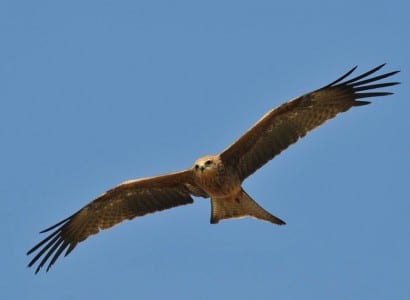
Australia is absolutely loaded with birds of prey. Anywhere you go you can usually look around and spot a raptor gliding along, looking for ameal. In most places, a likely suspect might be the Black Kite (above), although they are more brown than black. Like several other raptors, theyscavenge as much as hunt and the large number of road-killed wallabies and kangaroos have surely raised their numbers in the past centuries. The forked tail is agood field mark, especially separating them from the very-similar Square-tailed Kite.
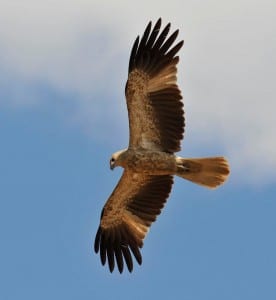
Nearly as abundant is the Whistling Kite, a species which was breeding while we are here, in the dry Australian winter. They tend to hold their wings like Ospreys and the pattern of dark and light aids the ID. All these raptors are very common as they don’t get shot at!
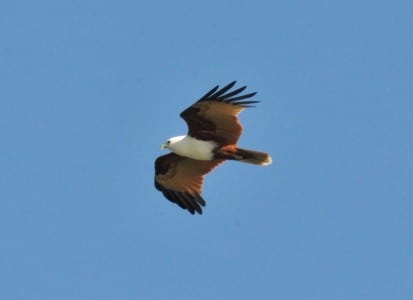
Brahminy Kites are mostly coastal, showing a love for water. This species, like the Black Kite, is spread throughout much of the hemisphere, showing uncommon beauty and color for a raptor. They do not eat Brahminy Bulls. Australia also has Black-shouldered Kites, like our White-tailed Kites, but you already know what they look like.
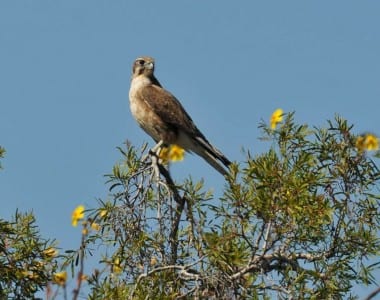
Falcons are often seen, usually in the form of the highly-variable Brown Falcon. It is interesting that Australian falcons have more rounded wings than the rest of the World, and as you might therefore deduce, a slower flight. This individual is fairly light underneath but many are far darker.
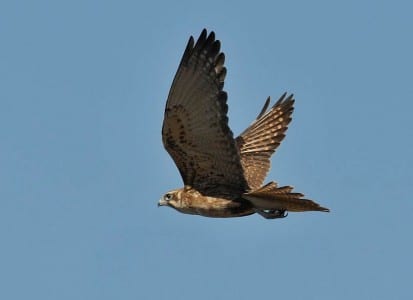
Here is a passing Brown Falcon showing the rounded wings and darker belly, plus the nifty, light spots on thetop of the remiges (flight feathers). Many falcons all over the World have the dark “helmet,” used to cut down on the glare of the sun. Also note their feet are larger than New World falcons.
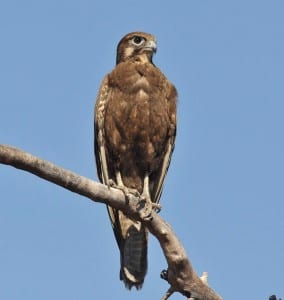
A rare bird of the open Outback is the Black Falcon which patrols the grasslands for birds and small mammals. They are not only darker than Browns; they are more slender and faster. Again, see the monster legs and feet for a falcon. You can see how the ecology of New World falcons might be different from those of Australia.
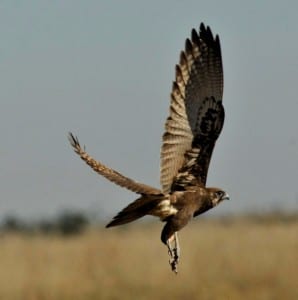
A rare bird of the open Outback is the Black Falcon which patrols the grasslands for birds and small mammals. They are not only darker than Browns; they are more slender and faster. Again, see the monster legs and feet for a falcon. You can see how the ecology of New World falcons might be different from those of Australia.
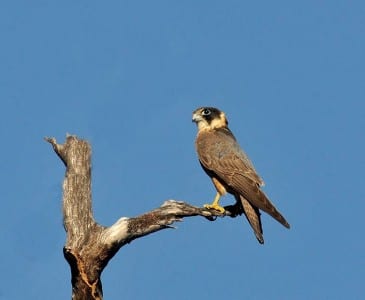
A rare bird of the open Outback is the Black Falcon which patrols the grasslands for birds and small mammals. They are not only darker than Browns; they are more slender and faster. Again, see the monster legs and feet for a falcon. You can see how the ecology of New World falcons might be different from those of Australia.
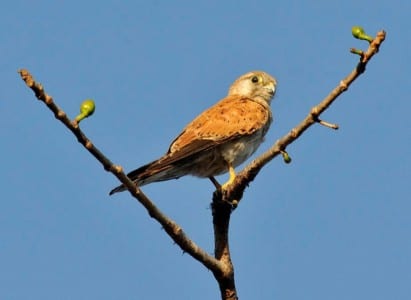
Kestrels are a worldwide group of small falcons and this one is the Nankeen Kestrel. The word “nankeen” is a Chinese term for this back color and is also applied to a night-heron here. Like other kestrels, and unlike most other raptors (except harriers), these have sexual dimorphism. This more reddish bird is the female, like our American Kestrel.
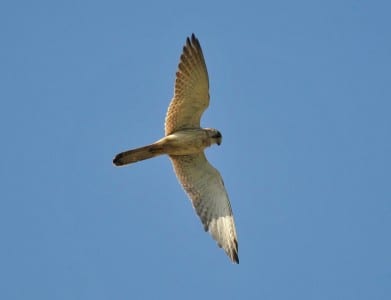
Kestrels like the Nankeen are famous for their hovering and long, narrow wings. Their wings are built more like other kestrels and less like the more common falcons of Oz. These probably emigrated from other continents, like the hobby. Note the blue sky:The climate in winter in Oz is normally blue, dry and pleasant temperatures.
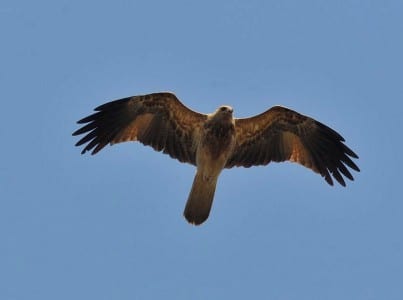
A far less common bird is the Black-chested Buzzard, another species of remote, open Outback regions. They could be mistaken for a kite, or even a harrier, and the name “buzzard” is a ridiculous tag. Buzzards are vernacular for our New World vultures, as well as the correct name for Old World buteos, but this species is neither. It is actually considered a kite, although it is a different genus from all other kites.
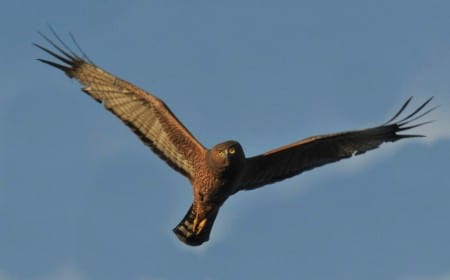
Harriers, like kestrels, are a worldwide group with several species. This is the Spotted Harrier, and this adult flew over me as the last rays ofthe sun were fading in Kakadu National Park. Note the dihedral, long, narrow wings and long tail, all marks of the harrier genus. Any bird photographer knows how hard harriers are to photograph. This bird looked down at me as if to say, “Oops, I guess this guy’s got me.”
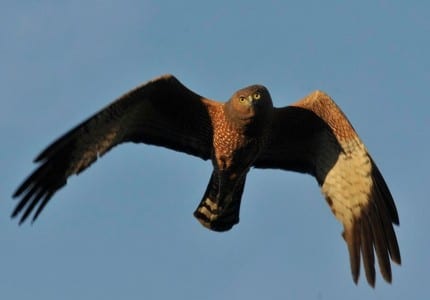
As he flew over me, knowing it was too late to drift off (like they usually do), this one kept his eyes fixed on me, as if to make sure I didn’t jump sixty feet up and grab him. Harriers have flat faces like owls and it seems to me I read they all pick up sounds from rodents in the grass for meals.
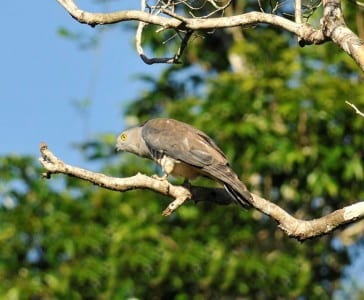
About the closest thing to a buteo we’ve found is the Pacific Baza, a strange hawk with a crest. Bazas flock for unexplained reason and make some pretty wild noises as well. Like most Australian raptors, they are tame and abiding of human intervention, almost appearing curious of us at times.
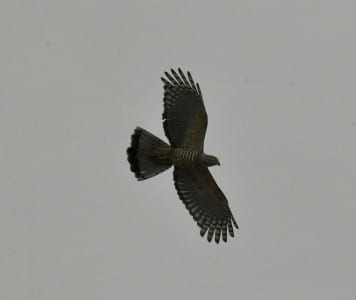
The Pacific Baza (shot on a rare cloudy day) is an odd bird, with a small head, barring unlike most hawks, very wide wings like a Hook-billed Kite and a massively-wide tail which also serves to catch thermals. This species is actually blue on much of its body in the right light but theperched bird (back page) is abnormal. Or young. Or ???
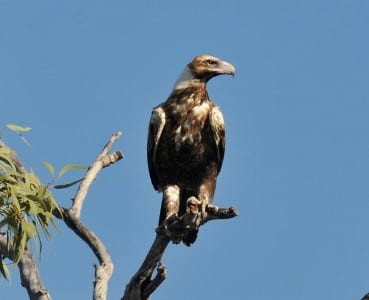
The Lord of the Outback is the mighty Wedge-tailed Eagle with this brown immature showing off its massive bill. This species gets blacker with age and older birds look quite wicked. I’m sure there will be more pictures of this species as Liz and I work Western Australia. Regrettably, a fair number of wedgies get hit by trucks on highways ofthe Outback, while feeding on carcasses of wallabies and kangaroos.

The other eagle is the White-bellied Sea Eagle (this shot from last year), with this species largely confined to the coast and large freshwater systems. In the same genus with our Bald Eagle, they scoop up fish like Barramundi and head for the safety of a tall tree. It is curious how they fly with strongly dihedral wings while our National Bird soars on flat wings.

 Posted in
Posted in 
























